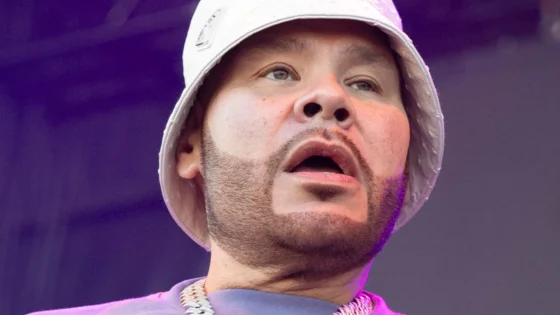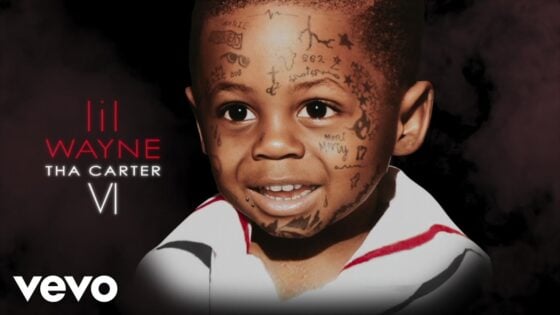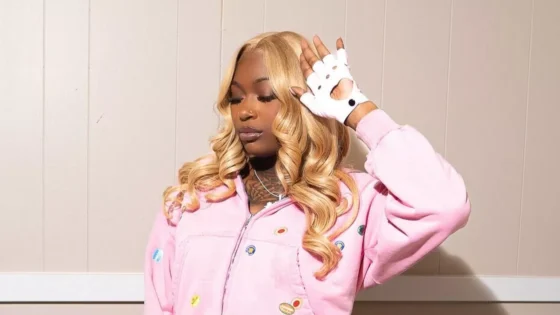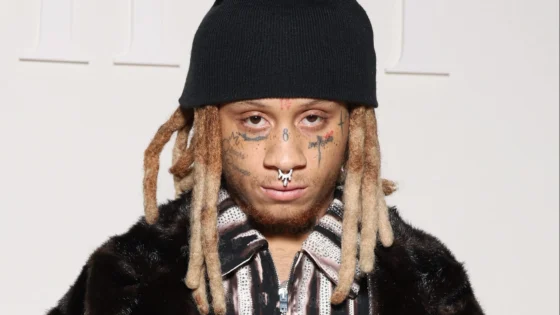To The Get Down‘s protagonists, the “get down” is the beat break on a record, the stretch of drums in between verses that allows dancers to fully cut loose. The rest of the track? The voices, horns and strings? Thats the bullshit, the wack. Netflix’s series tells the story of Hip-Hop’s origin, but lacks the curatorial focus and discipline of its characters. They are obsessed with isolating the real, but The Get Down itself isn’t as surgical. The series is the whole record, wackness and bullshit included.
With its unfocused and unmanageable breadth, The Get Down isn’t necessarily “about” any one thing, but it is particularly concerned with ownership. Who owns the futures of Mylene and Ezekiel, the Bronx-bred teenage Disco Diva and Emcee that serve as the primary focus of the show? Who owns the futures of their respective creative movements? Who owns the block, the neighborhood, the borough? Who owns the power to make changes? Who owns the power to stop them?
Its particularly odd, then, that Netflix – at least anecdotally, since the streaming service withholds traditional ratings metrics – seems disinterested in owning The Get Down. Obviously the company technically owns all twelve breathtakingly expensive episodes of the series, but it appears indifferent about supporting Baz Lurhmann’s expansive New York City opera. In an unprecedented move for Netflix, season one of The Get Down was released in two parts, the second of which appeared in the content library last week with surprisingly little fanfare, especially compared to offerings like Master of None, or a new special from Louis C.K., two shows that received far less financial investment from the company. The Get Down hasn’t penetrated the social media zeitgeist like those and other series, and a second season of the show hasn’t yet been ordered. Maybe it never will be.
That would be regrettable, but understandable. The Get Down isn’t great enough to spawn voracious word of mouth or position the show as a critical darling. Like most of Luhrmann’s work, it’s characterized by an indulgence and lack of focus that makes it unclear what exactly the series is trying to say, and who it’s asking to listen. If anything, though, it’s singular; there’s nothing like it in Netflix’s library or beyond, and there’s never been another Hip-Hop or New York story told through The Get Down‘s shimmery, campy, and proudly strange filter.
Any elevator pitch for The Get Down starts and stops with “Baz Lurhmann’s Hip-Hop origin story,” which is factually correct. Like the music itself, however, the series is marked by a boundless curiosity and bottomless appetite – it leaps between genres, sprints around the city, gazes in an infinite number of directions, and tells an unyielding barrage of stories. The show is too packed and too ambitious in that regard; it’s eyes are bigger than its run time, while trying to architect a new mythology in late 1970’s New York City – a city on the brink of ruin, hiding a massive groundswell of creativity – but stumbling over its own cumbersome narrative.
One story follows Zeke, a bright teenager with a life like a Twister game. One foot is in Hip-Hop, the other in his Manhattan internship. His hands are stretched between his girlfriend Mylene, his family, and Bronx politicians that adopt him as a reform mascot. There are more dots on the board than Zeke has extremities, and each one represents its own fully populated-universe. Mylene’s story is as overflowing as Zeke’s. She is discovered by record studios that see in her the next Disco Queen, but is tugged at by her suffocating Pastor father, her friends, Zeke himself, her Uncle, and her own vision of a future. Zeke’s hip-hop world is loaded with his four friends, dangerous gangsters, and rival crews – almost all of them with story arcs – and Mylene’s is filled with Record execs, talent managers, those same gangsters, and her church. It’s too much for The Get Down’s fourteen hours to handle.
It’s also extremely convenient that these two should have these fates: Mylene, the next gigantic star, and Zeke, a future hip-hop legend in his own right that also happens to be accepted to Yale and is imbued with Political power. The series gamely constructs its myth though, perhaps understanding that most origin stories strain credulity in retrospect. Zeke and Mylene are improbable; improbable, like being able to trace the spread of Hip-Hop with pinpoint accuracy, working back from global to multinational to national to coastal to New York City to The Bronx to 1520 Sedgwick Avenue, where DJ Kool Herc first extended the break. Luhrmann is plainly infatuated with that mythology, and The Get Down treats Hip Hop’s origin with earnest wonder.
The founding DJ’s in The Get Down are treated like kings on a map reminiscent of Game of Thrones. Herc owns the west, Afrika Bambaata and the Zulus own the east, and Grandmaster Flash – and the series protagonists’ – own the middle. They are the Shoguns of The Get Down, and their territories reflect their respective styles and ethics. There are dashes of West Side Story, The Warriors, Kung Fu cinema, and even Grease in the way that the series treats the creative balkanization of the Bronx. Characters tip-toe through certain neighborhoods, lest they get challenged to a dance-off or DJ Battle.
The show is also densely populated with Easter eggs and nods from disparate genres; Shaolin Fantastic, the DJ and nominal leader of Zeke’s crew (The Get Down Brothers), fights with a martial-arts style, and in early episodes his swift movements are paired with dubbed Kung-Fu swoosh sounds, while The Get Down Boys and their female counterparts – Mylene and her friends – carry themselves like the T-Birds and Pink Ladies in Grease. When The Get Down Boys try to infiltrate a Cool Herc party to retrieve an illicit bootleg cassette, they echo the precocious innocence of fellow Netflix youngsters in Stranger Things. Disco Clubs and Get Down Parties come to life with the gaudy art design of other Luhrmann musicals, and the narrative is interspersed with archival footage of a borough in ruin.
That’s where the grit stops though, which may be one reason why The Get Down has had difficulty penetrating the cultural conversation. The bleak reality of the show’s setting isn’t represented on screen as more than a fact of life, decorative features that present quotidian narrative challenges for characters to overcome. The show isn’t as concerned with urban decay, broken policy, or the inevitable corruption of institutions as it is with romance, creativity, and ambition – the anti-Wire in that regard – which is counter-intuitive, as Hip-Hop is usually unpacked and understood within the social circumstances of its origin. The Get Down occasionally steps back and picks at the big issues, but there is no polemic here.
Too much of any conversation about creative art revolves around external factors – think of the snarky refrain that met Donald Trump’s election: “At least music is about to be awesome” – but the truth almost always tells a different story. Content rarely matters as much as we imagine it matters, or else Rage Against the Machine concerts would have been packed with Marxist studies majors instead of vaguely-angsty young people, and maybe someone would have bought Neil Young’s Impeach the President album.
Instead, most art responds to other art more often than it speaks truth to power. The two are almost always conflated in retrospect – ‘Grunge’ is characterized as more of a response to Reagan-era ennui than Hair Metal, even though the opposite is probably true. We can assume that the Seattle crowd didn’t vote Republican, but they probably picked up guitars because they didn’t see themselves reflected in the pictures bands like Def Leppard and Poison were painting. Likewise, the common mythology of hip-hop’s nascence focuses primarily on the displacement and neglect of entire populations, on the horrors of drug use, and on the unstoppable rise of violent crime. Those were the unfortunate bedrock of a certain reality in 1977, but that narrative also ignores the interior motivations of a scene, people who struggled to find their place in their neighborhood, their age group, their borough, and their art just as much as they struggled to cushion themselves against the brutality of the nightly news.
It feels natural, then, to chastise The Get Down, to #staywoke the series to death because it treats drug and arson epidemics as window dressing in its Hip-Hop Kung-Fu fairy tale. Don’t. Hard-to-watch dramas and gripping documentaries are essential, but The Get Down isn’t that interested in that particular well-told story. Its focus is more on the relationships that define the lives of its character’s, on the things they feel as they discover vital new arts, on welcoming new crowds and new potential within themselves. The show is a little too breezy, a little too trivial, and definitely too stuffed, but it attaches a fresh mythology to the explosion of arts from 1977’s South Bronx – one where people are defined more by their unrequited loves, creative desires, awkward development, and personal triumphs than by the résumé of loss and struggle that they accrued too early in life.
The understood correlation between suffering and art, applied to the birth of hip-hop, dismisses an entire paradigm shift as the silver lining of an unstoppable black cloud of broken promises and toxic public policy, but you can assume that each individual within that movement also had motivations that skewed more personal – to get the girl, to fit in, to realize their potential, to please a mentor, to throw a party, to have fun. The Get Down is fun, and the story it tells is distinctly different than the one Hip-Hop itself would go on to tell in the 1980’s, 1990’s, and beyond. The Get Down Boys exist in an unforgiving environment, but they reign in a time before The War on Drugs, the crack epidemic, before Gangsta Rap and fatal beef, and before New York City bankruptcy and over two thousand murders a year. The Get Down focuses on characters with unlimited potential and a burgeoning art form with no real definition but an unlimited capacity for hope.
This is still the story of Hip-Hop crawling from its primordial Bronx ooze, and for no other reason The Get Down should be anticipated if it ever does return. This genre has been deconstructed, codified as street reportage and the rebellious pulse of urban neglect. Its mythology, however, is constructed around characters – from the DJs in The Get Down to 80’s New York giants Rakim, Run DMC, and LL Cool J, from Gangsta Rap to G-Funk, from east to west, from Biggie to Tupac and Nas to Jay-Z, from the Native Tongues movement to G-Unit and beyond. These are resonant figures, each with their own mythical origins and character arcs. The Get Down lovingly elevates its deities, but focuses – for better or worse – on the connective tissue of the culture. The series is marred somewhat by an immeasurable ambition and an insatiable appetite for story, but its lone season ends in 1978. Should The Get Down ever return, Hip-Hop has so much more story to tell.

































